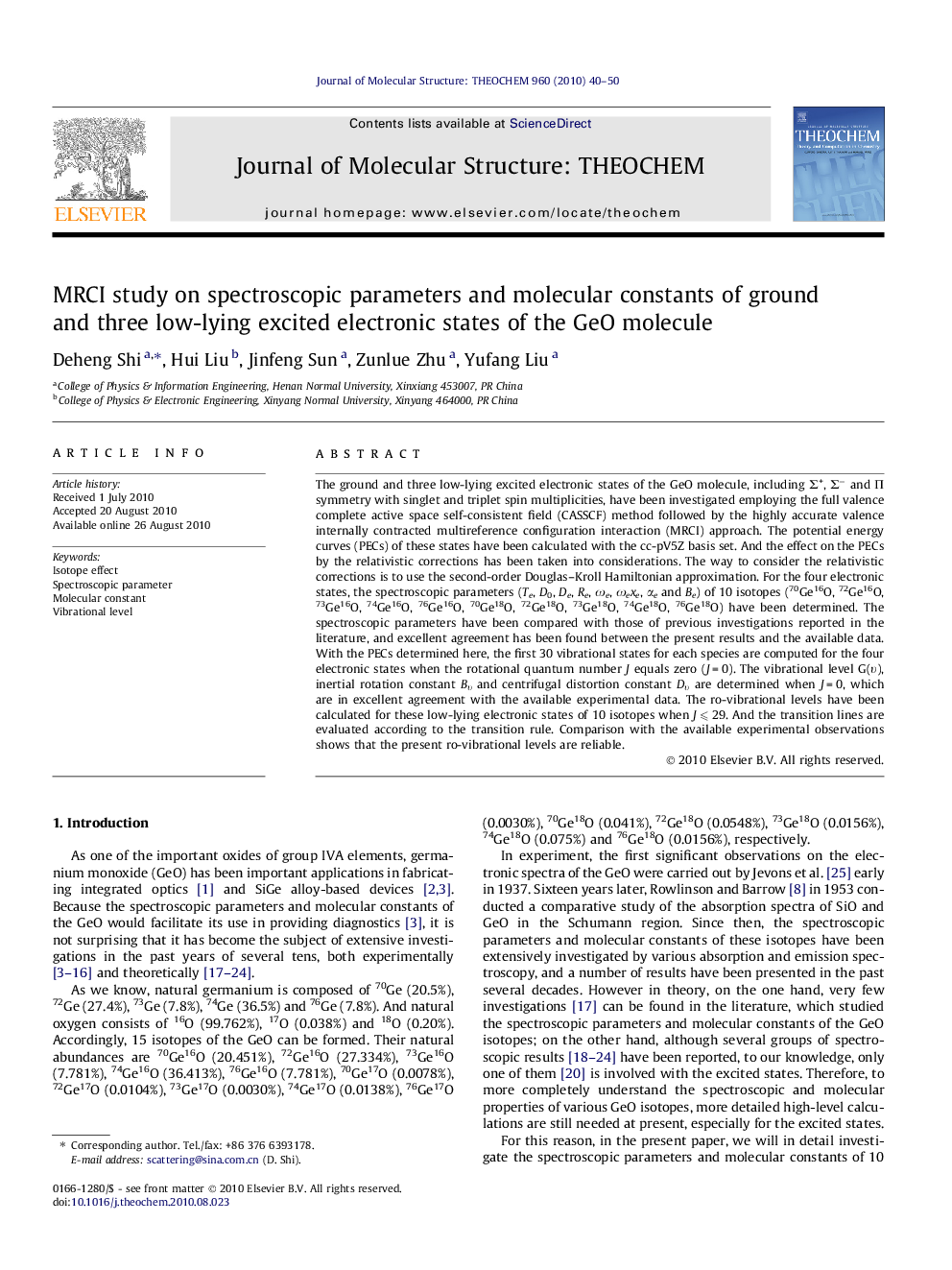| Article ID | Journal | Published Year | Pages | File Type |
|---|---|---|---|---|
| 5416418 | Journal of Molecular Structure: THEOCHEM | 2010 | 11 Pages |
Abstract
The ground and three low-lying excited electronic states of the GeO molecule, including Σ+, Σâ and Î symmetry with singlet and triplet spin multiplicities, have been investigated employing the full valence complete active space self-consistent field (CASSCF) method followed by the highly accurate valence internally contracted multireference configuration interaction (MRCI) approach. The potential energy curves (PECs) of these states have been calculated with the cc-pV5Z basis set. And the effect on the PECs by the relativistic corrections has been taken into considerations. The way to consider the relativistic corrections is to use the second-order Douglas-Kroll Hamiltonian approximation. For the four electronic states, the spectroscopic parameters (Te, D0, De, Re, Ïe, Ïexe, αe and Be) of 10 isotopes (70Ge16O, 72Ge16O, 73Ge16O, 74Ge16O, 76Ge16O, 70Ge18O, 72Ge18O, 73Ge18O, 74Ge18O, 76Ge18O) have been determined. The spectroscopic parameters have been compared with those of previous investigations reported in the literature, and excellent agreement has been found between the present results and the available data. With the PECs determined here, the first 30 vibrational states for each species are computed for the four electronic states when the rotational quantum number J equals zero (J = 0). The vibrational level G(Ï
), inertial rotation constant BÏ
and centrifugal distortion constant DÏ
are determined when J = 0, which are in excellent agreement with the available experimental data. The ro-vibrational levels have been calculated for these low-lying electronic states of 10 isotopes when J ⩽ 29. And the transition lines are evaluated according to the transition rule. Comparison with the available experimental observations shows that the present ro-vibrational levels are reliable.
Related Topics
Physical Sciences and Engineering
Chemistry
Physical and Theoretical Chemistry
Authors
Deheng Shi, Hui Liu, Jinfeng Sun, Zunlue Zhu, Yufang Liu,
